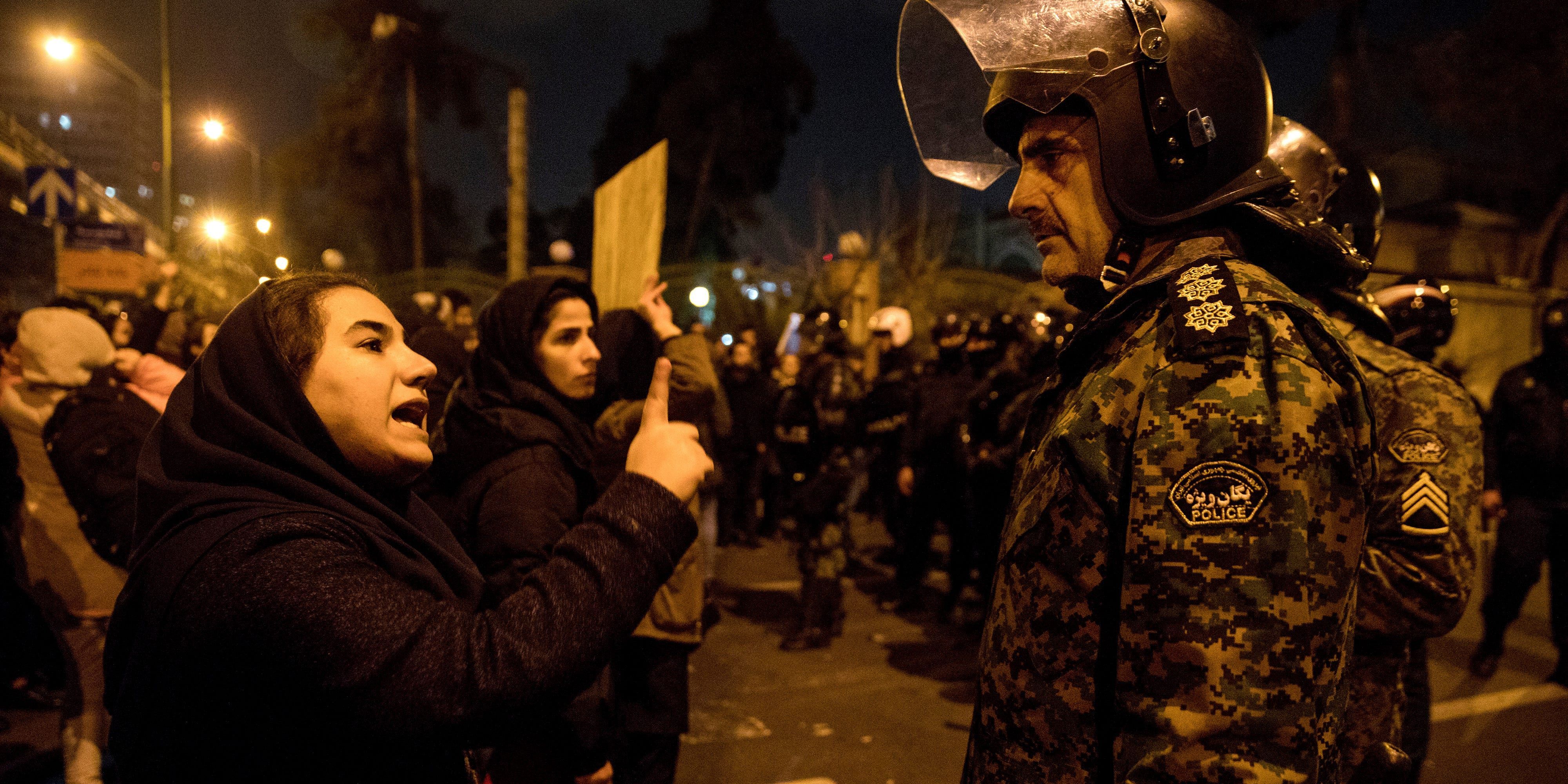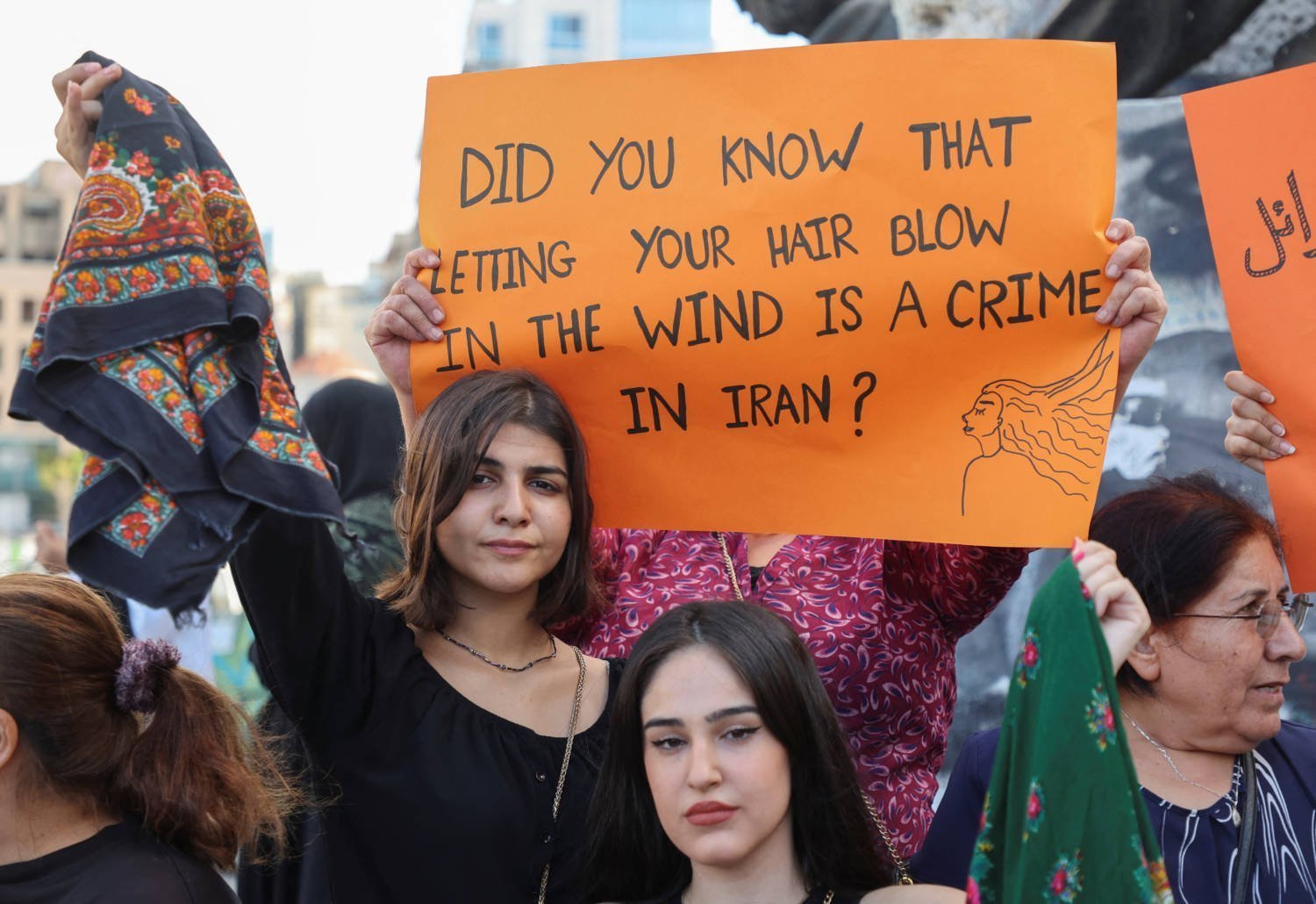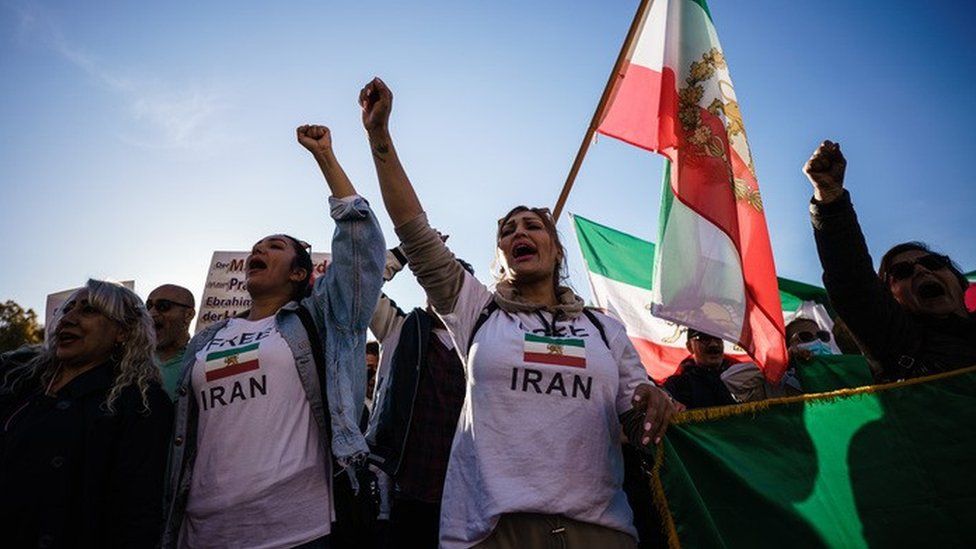Current Events and Political Landscape: News Iran

The political landscape of Iran is a complex and dynamic one, shaped by a unique blend of religious and secular influences, domestic and international pressures, and a long history of political and social transformation.
Key Figures and Parties
The Iranian political system is characterized by a complex web of institutions and individuals. The Supreme Leader, currently Ayatollah Ali Khamenei, holds the highest position of authority, wielding significant influence over both religious and political matters. He is responsible for appointing key figures in the government, including the President and the judiciary. The President, currently Ebrahim Raisi, is elected by the people but operates within a framework defined by the Constitution and the Supreme Leader. The Majlis (Parliament) is the legislative body, responsible for enacting laws and overseeing the government.
Major Political Issues
Iran faces a range of political issues, both domestic and international. Domestically, economic challenges, including inflation and unemployment, remain significant concerns. The government is also grappling with social issues, such as youth unemployment, inequality, and restrictions on personal freedoms. Internationally, Iran’s nuclear program and its regional involvement, particularly in Syria and Yemen, continue to generate tension with Western powers.
Recent Protests and Demonstrations
Iran has witnessed a series of protests and demonstrations in recent years, fueled by a range of grievances, including economic hardship, social restrictions, and political repression. The protests of 2019 and 2022, triggered by economic hardship and the death of Mahsa Amini in police custody, respectively, highlighted the deep-seated discontent within Iranian society. These protests have been met with a forceful crackdown by the government, resulting in arrests, detentions, and even deaths.
Comparison with Previous Years
While Iran has experienced periods of political and social unrest throughout its history, the recent protests have been notable for their scale, intensity, and the widespread participation of women and young people. These protests reflect a growing sense of frustration and a demand for greater political and social freedoms. The government’s response to these protests has also been more forceful than in previous years, highlighting the growing polarization within Iranian society.
Economic and Social Conditions

Iran’s economic and social landscape is a complex tapestry woven with both strengths and weaknesses. The country boasts a rich history of resilience, adapting to challenges posed by international sanctions and internal complexities.
Economic Overview
The Iranian economy is a mixed economy with a significant presence of state-owned enterprises. Despite abundant natural resources, including oil and gas reserves, the economy faces various challenges, including:
- Sanctions: The impact of international sanctions has significantly impacted Iran’s economic growth, limiting its access to global markets and financial institutions. This has resulted in reduced investment, limited access to technology, and constrained economic diversification.
- Inflation: Persistent inflation remains a concern, eroding purchasing power and impacting the standard of living for many Iranians. This is often attributed to a combination of factors, including government spending, currency fluctuations, and supply chain disruptions.
- Unemployment: High unemployment rates, particularly among youth, pose a significant social challenge. This is exacerbated by economic sanctions, limited access to international markets, and a lack of job creation opportunities.
Despite these challenges, Iran possesses key economic strengths:
- Natural Resources: Iran’s vast reserves of oil and gas are crucial to its economy, providing significant revenue and potential for growth. However, reliance on these resources can also make the economy vulnerable to global price fluctuations.
- Human Capital: Iran has a relatively young and educated population, which is a valuable asset for economic development. However, challenges exist in effectively utilizing this human capital due to unemployment and limited opportunities for skilled labor.
- Strategic Location: Iran’s strategic location in the Middle East, connecting Asia, Europe, and Africa, offers potential for regional trade and connectivity. This can be leveraged for economic growth and development.
Impact of Sanctions
International sanctions have significantly impacted Iran’s economy, hindering its growth and development. The restrictions on trade and financial transactions have:
- Reduced Foreign Investment: Sanctions have discouraged foreign investors from engaging in Iran, limiting access to capital and technology.
- Limited Access to Global Markets: The inability to freely trade with global markets has hampered Iran’s ability to export its goods and services, reducing its economic competitiveness.
- Increased Inflation: Sanctions have contributed to increased inflation by limiting access to essential imports, disrupting supply chains, and weakening the Iranian Rial.
Iran has employed various strategies to mitigate the impact of sanctions, including:
- Developing Domestic Production: The government has encouraged the development of domestic industries to reduce reliance on imports and create jobs. This has led to some success in certain sectors, but challenges remain in achieving self-sufficiency.
- Strengthening Regional Ties: Iran has strengthened economic ties with neighboring countries, particularly in the Eurasian region, to reduce dependence on Western markets. This has resulted in increased trade and investment, but also faces geopolitical complexities.
- Utilizing Cryptocurrency: Iran has explored the use of cryptocurrencies to circumvent sanctions and facilitate international transactions. However, this remains a complex and evolving area with regulatory challenges.
Social and Cultural Landscape
Iran is a diverse society with a rich cultural heritage. Key demographic trends include:
- Young Population: Iran has a relatively young population, with a median age of 32. This presents both opportunities and challenges for economic development and social stability.
- Urbanization: Iran is experiencing rapid urbanization, with a growing population concentrated in major cities. This presents challenges in providing essential services and managing urban infrastructure.
- Religious and Ethnic Diversity: Iran is home to a diverse range of religious and ethnic groups, including Persians, Azeris, Kurds, and Baluchis. This diversity contributes to the country’s cultural richness but also presents challenges in fostering national unity.
Education System
Iran has a well-established education system with a high literacy rate. The system is structured with primary, secondary, and higher education levels. However, challenges exist in:
- Quality of Education: Concerns remain regarding the quality of education, particularly in rural areas and among marginalized communities. This is attributed to factors such as limited resources, teacher shortages, and curriculum inadequacies.
- Access to Higher Education: Access to higher education remains a challenge for many, particularly for women and those from lower socioeconomic backgrounds. This is due to factors such as limited funding, high tuition fees, and limited opportunities for scholarships.
Healthcare Infrastructure
Iran has a public healthcare system that provides basic healthcare services to its citizens. However, challenges exist in:
- Quality of Care: While the healthcare system has made significant progress, concerns remain regarding the quality of care, particularly in rural areas and among marginalized communities. This is attributed to factors such as limited resources, equipment shortages, and insufficient staffing.
- Access to Specialized Care: Access to specialized healthcare, such as advanced treatments and procedures, remains a challenge for many. This is due to factors such as limited availability of specialists, high costs, and limited access to advanced technologies.
International Relations and Foreign Policy

Iran’s foreign policy is a complex tapestry woven with threads of regional ambitions, historical grievances, and ideological convictions. It seeks to project its influence across the Middle East and beyond, navigating a delicate balance between maintaining its national interests and fostering alliances with key regional and global actors.
Iran’s Foreign Policy Objectives, News iran
Iran’s foreign policy objectives are multifaceted and encompass a range of strategic goals, including:
- Maintaining its regional dominance: Iran aims to secure its influence in the Persian Gulf region and counter the presence of its adversaries, particularly the United States and its allies. This involves supporting allies, such as Hezbollah in Lebanon and Hamas in Palestine, and promoting its Shi’a Islamic ideology in the region.
- Preserving its national security: Iran prioritizes protecting its territorial integrity and national sovereignty, particularly against external threats perceived from its neighbors and the West. This includes maintaining a strong military force and developing nuclear capabilities.
- Promoting economic development: Iran seeks to enhance its economic standing through regional trade and international investment. It aims to overcome economic sanctions imposed by the West and strengthen its position in the global economy.
- Strengthening its international standing: Iran desires to be recognized as a major player on the global stage and gain greater influence in international organizations, such as the United Nations.
Relationships with Key Regional and Global Actors
Iran’s relationships with key regional and global actors are characterized by a mix of cooperation and conflict, depending on the specific issue and the interests at stake.
- United States: Relations between Iran and the United States have been marked by deep mistrust and antagonism for decades. The two countries have been engaged in a protracted rivalry since the 1979 Islamic Revolution, punctuated by periods of tension and diplomacy. The 2015 nuclear deal, known as the Joint Comprehensive Plan of Action (JCPOA), represented a significant attempt to improve relations, but it was subsequently abandoned by the US in 2018. The two countries have been at odds over Iran’s nuclear program, its support for regional allies, and its alleged involvement in regional conflicts.
- Russia: Iran and Russia have forged a strategic partnership in recent years, driven by shared interests in opposing US influence in the Middle East and countering Western sanctions. The two countries have collaborated on military and economic projects, including the development of nuclear power plants in Iran. However, the relationship has been strained by Russia’s invasion of Ukraine, which has complicated Iran’s efforts to secure its economic interests.
- China: Iran and China have developed close economic and political ties in recent years, driven by China’s growing energy needs and Iran’s desire to diversify its economic partnerships. The two countries have signed a 25-year strategic cooperation agreement that includes investments in infrastructure, energy, and technology.
- Saudi Arabia: Iran and Saudi Arabia are regional rivals, with a history of conflict and competition for influence in the Middle East. The two countries have clashed over religious and political differences, and their proxy conflicts in Yemen and Syria have further exacerbated tensions.
- European Union: Iran’s relations with the European Union have been characterized by a mix of cooperation and tension. The EU has been a key player in the nuclear negotiations with Iran, but it has also expressed concerns about Iran’s human rights record and its support for regional allies.
Iran’s Involvement in Regional Conflicts
Iran has been deeply involved in regional conflicts, often through proxy forces and supporting allies. This involvement has shaped Iran’s foreign policy and its relationships with regional actors.
- Syrian Civil War: Iran has been a key supporter of the Syrian government, providing military and financial assistance to President Bashar al-Assad. Iran’s involvement in the Syrian conflict has been driven by its strategic interests in maintaining its influence in the region and countering the influence of its adversaries, such as Saudi Arabia and the United States.
- Yemeni Civil War: Iran has supported the Houthi rebels in Yemen, providing them with military and financial assistance. Iran’s involvement in the Yemeni conflict is part of its broader strategy to counter Saudi Arabia’s influence in the region and project its own power.
- Palestinian-Israeli Conflict: Iran has been a vocal supporter of the Palestinian cause and has provided financial and military assistance to Palestinian militant groups, such as Hamas and Islamic Jihad. Iran’s involvement in the Palestinian-Israeli conflict is driven by its ideological commitment to supporting the Palestinian people and challenging Israeli dominance in the region.
Iran’s Role in International Organizations
Iran is a member of several international organizations, including the United Nations, the Non-Aligned Movement, and the Organization of the Islamic Cooperation. Iran seeks to use its membership in these organizations to advance its foreign policy objectives, promote its national interests, and influence international decision-making.
Impact of Iran’s Nuclear Program on International Relations
Iran’s nuclear program has been a major source of tension in its international relations, leading to sanctions, diplomatic isolation, and military threats. The development of nuclear weapons by Iran would have significant implications for regional security and global stability.
- Negotiations with World Powers: The nuclear negotiations between Iran and world powers, which culminated in the 2015 JCPOA, were a significant attempt to address international concerns about Iran’s nuclear program. The JCPOA placed strict limitations on Iran’s nuclear activities in exchange for the lifting of economic sanctions. However, the US withdrawal from the agreement in 2018 and the reimposition of sanctions have led to a renewed standoff between Iran and the West.
- Impact on Regional Security: The potential development of nuclear weapons by Iran would have significant implications for regional security. It would likely lead to an arms race in the Middle East, with other countries seeking to acquire nuclear weapons to counter Iran’s capabilities. This could further destabilize the region and increase the risk of nuclear conflict.
- Global Implications: Iran’s nuclear program has also had global implications, raising concerns about the proliferation of nuclear weapons and the potential for a nuclear arms race. The development of nuclear weapons by Iran could undermine the global non-proliferation regime and make it more difficult to prevent the spread of these weapons to other countries.
Potential for Future Cooperation or Conflict
The future of Iran’s international relations is uncertain and depends on a complex interplay of factors, including regional dynamics, economic interests, and global power shifts. There is potential for both cooperation and conflict between Iran and other countries in the region and beyond.
- Cooperation: Iran has shown a willingness to engage in diplomatic dialogue and seek common ground with other countries, particularly on issues of regional security and economic development. For example, Iran has cooperated with some regional powers, such as Iraq and Oman, to address shared concerns about security and terrorism.
- Conflict: The potential for conflict remains high, driven by Iran’s support for regional allies, its nuclear program, and its rivalry with the United States and its allies. The ongoing tensions between Iran and the US, particularly over the nuclear program, could escalate into a military confrontation.
